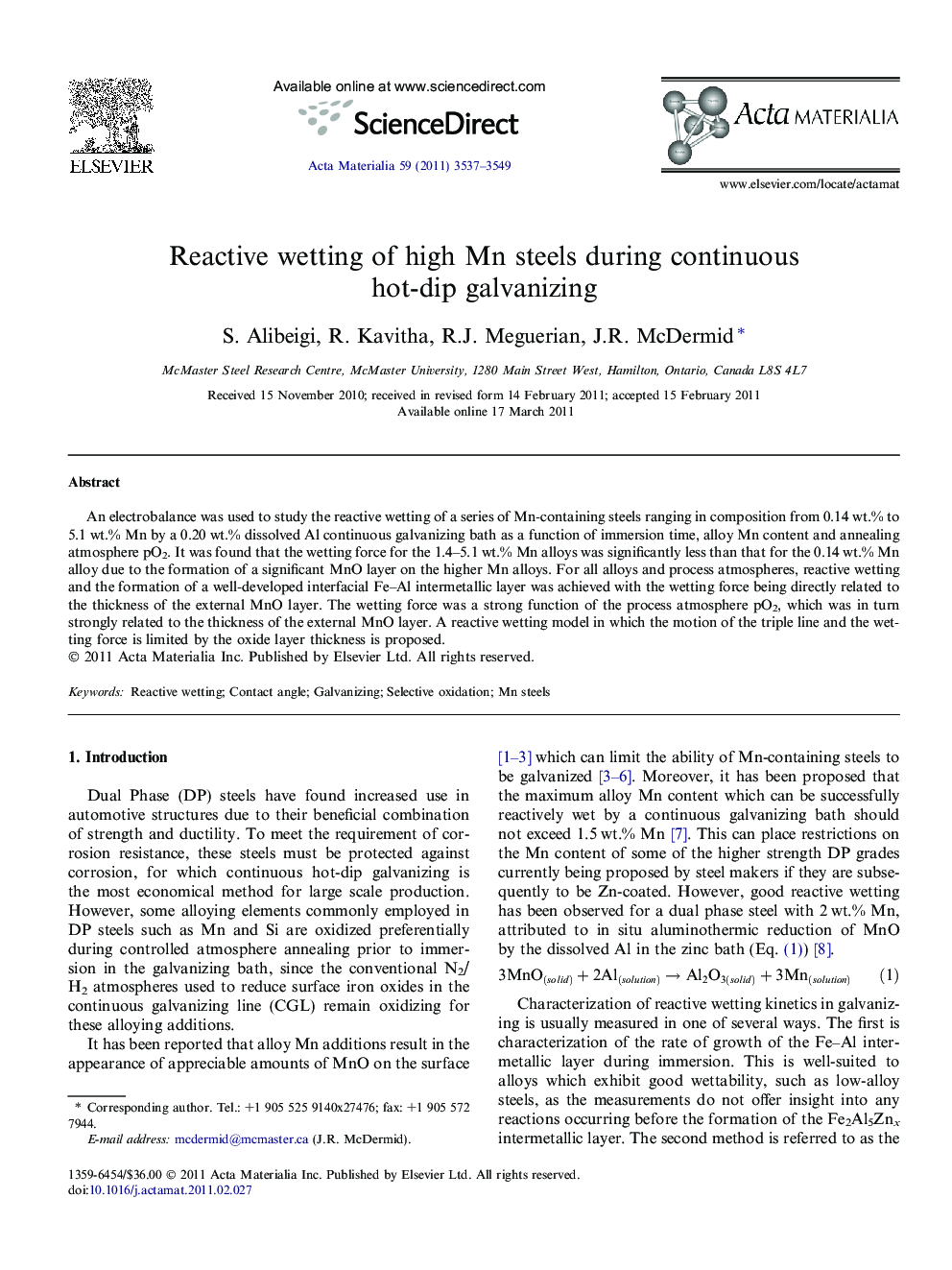| Article ID | Journal | Published Year | Pages | File Type |
|---|---|---|---|---|
| 1447151 | Acta Materialia | 2011 | 13 Pages |
An electrobalance was used to study the reactive wetting of a series of Mn-containing steels ranging in composition from 0.14 wt.% to 5.1 wt.% Mn by a 0.20 wt.% dissolved Al continuous galvanizing bath as a function of immersion time, alloy Mn content and annealing atmosphere pO2. It was found that the wetting force for the 1.4–5.1 wt.% Mn alloys was significantly less than that for the 0.14 wt.% Mn alloy due to the formation of a significant MnO layer on the higher Mn alloys. For all alloys and process atmospheres, reactive wetting and the formation of a well-developed interfacial Fe–Al intermetallic layer was achieved with the wetting force being directly related to the thickness of the external MnO layer. The wetting force was a strong function of the process atmosphere pO2, which was in turn strongly related to the thickness of the external MnO layer. A reactive wetting model in which the motion of the triple line and the wetting force is limited by the oxide layer thickness is proposed.
► High Mn dual phase steel can be reactively wet by a continuous galvanizing bath alloy. ► Reactive wetting during galvanizing can be monitored using an electrobalance. ► The reactive wetting force is a strong function of the external MnO layer thickness. ► The reactive wetting force is somewhat independent of alloy Mn content for alloys containing over 1.4 wt.% Mn.
